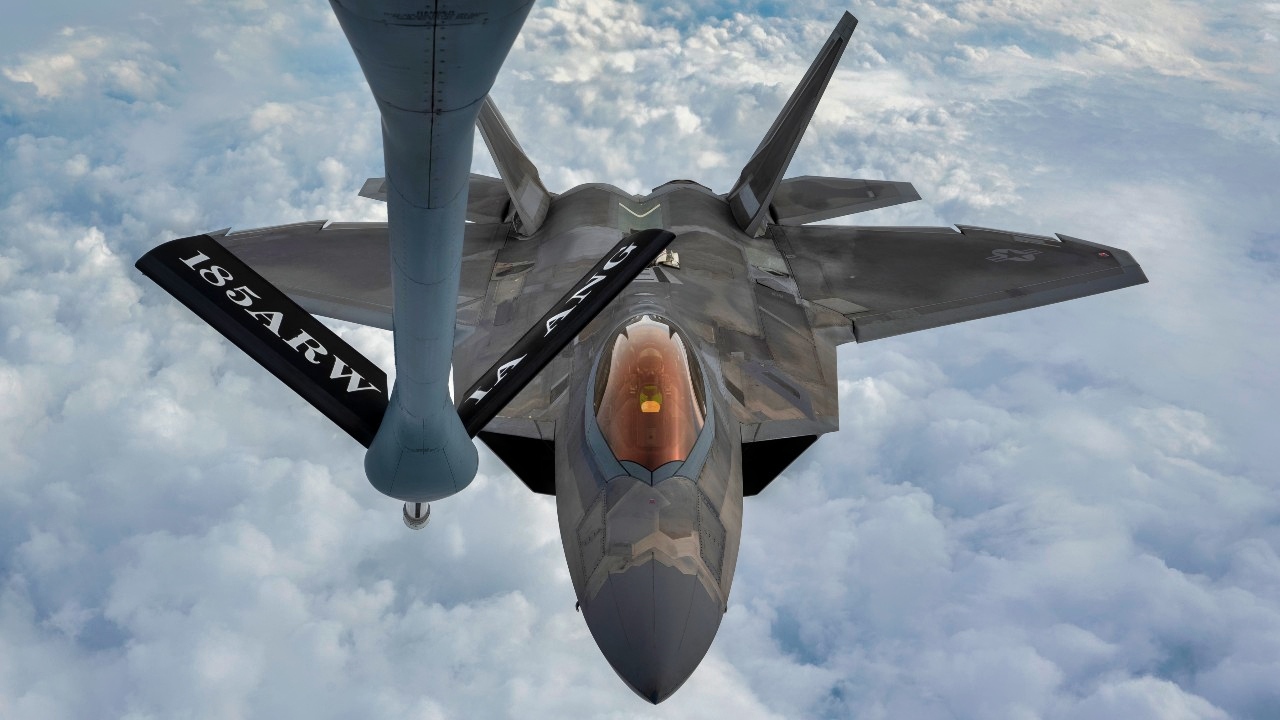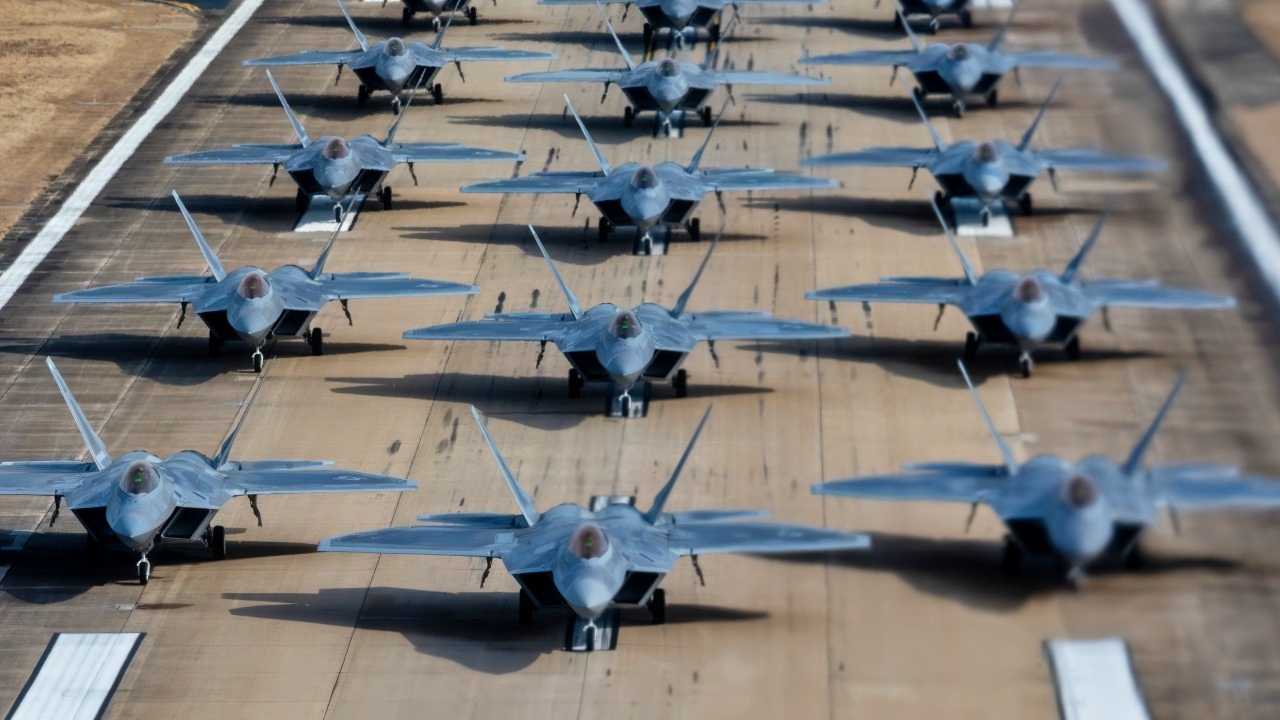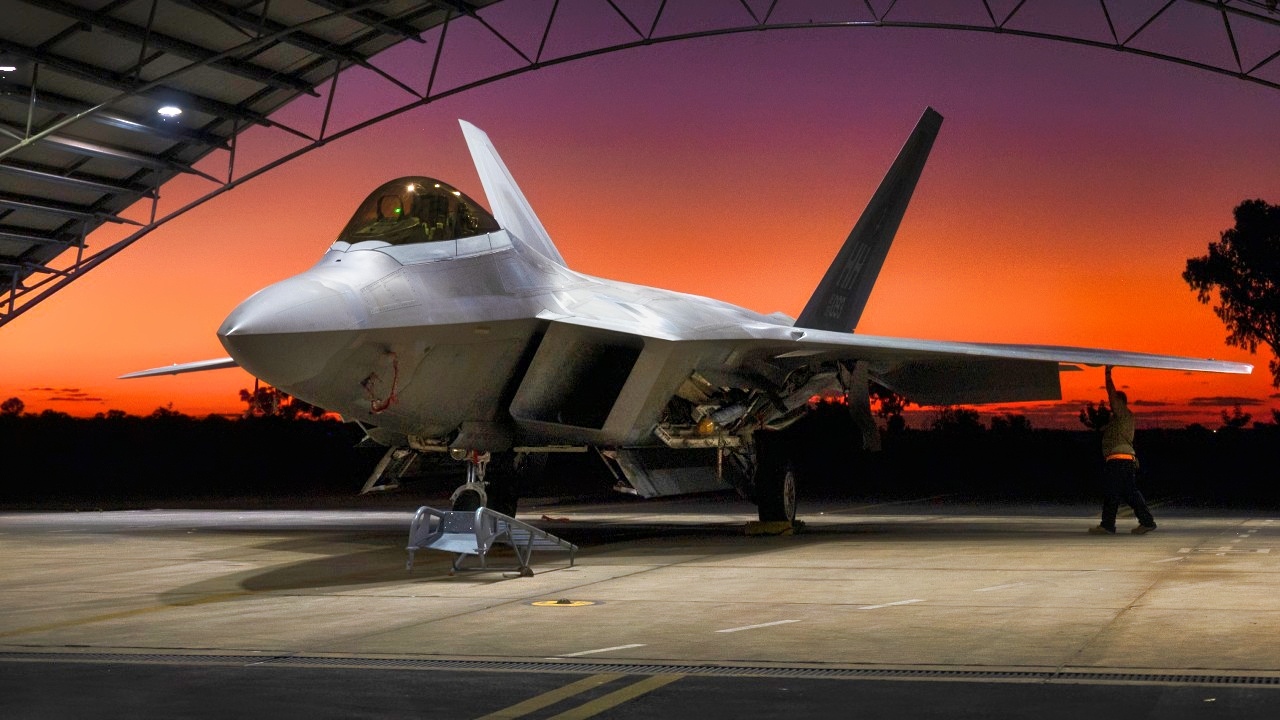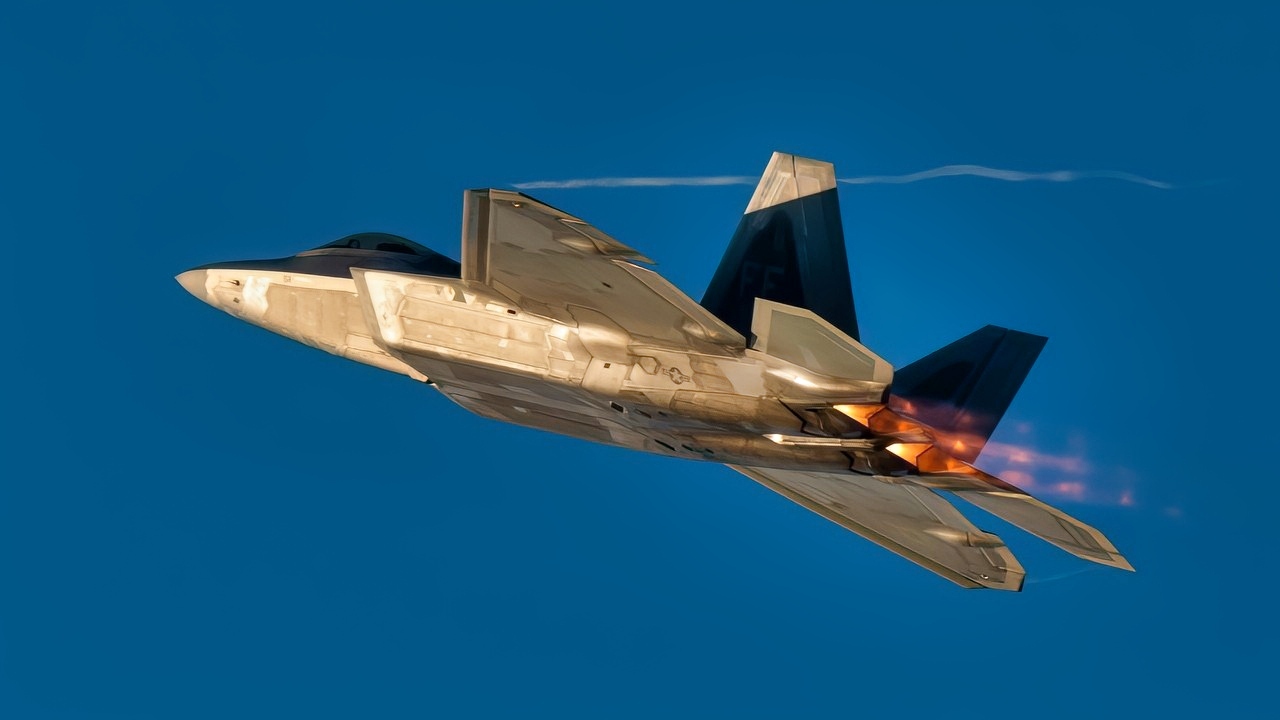Key Points and Summary – Despite its reputation as the world’s premier air superiority fighter, the F-22 Raptor suffers from five significant drawbacks.
-Its staggering production and development costs led to a drastically limited fleet size (only 187 built).

A U.S. Air Force F-22 Raptor approaches the boom of a KC-135 Stratotanker during a refueling mission over the Florida Panhandle, Dec. 14, 2022. Aerial refueling allows pilots to stay airborne for longer periods of time, increasing the mission capabilities individual aircraft can support. (U.S. Air Force photo by Tech. Sgt. Betty R. Chevalier)
-Designed purely for air dominance, it has limited multirole capability, especially in ground attack.
-The F-22 is notoriously maintenance-intensive, with its delicate stealth coatings requiring extensive upkeep, resulting in lower readiness rates.
-Its technology is aging, lacking modern features like helmet-mounted displays found on the F-35, partly because it was never exported or put through continuous block upgrades.
-Finally, it was arguably built for the wrong war, arriving after the Cold War ended and its production prematurely halted before the current era of great power competition.
The F-22 Raptor Stealth Fighter: 5 Biggest Challenges
The F-22 Raptor is one of the most iconic modern aircraft. Built during the last years of the Cold War, the aircraft is a terrifying combination of stealth and speed, which makes it ideal for air superiority. Even today, the F-22 remains one of the most advanced stealth fighters in the world and is arguably more advanced than the F-35 in certain regards.
However, the aircraft is not perfect. It suffered from several setbacks, which ultimately led to the end of its production in 2011. Here are the five most significant drawbacks to the F-22 Raptor.
Staggeringly High Costs
Unsurprisingly, one of the most glaring issues with the F-22 is its cost and the limited number of aircraft produced.
The program’s total cost exceeded $67 billion, with each aircraft costing roughly $150 million to build and over $330 million when factoring in research and development.
These figures make the F-22 one of the most expensive fighter jets in history.

Aircraft from the 1st Fighter Wing conducted an Elephant Walk at Langley Air Force Base, Jan. 31, 2025, showcasing the wing’s readiness and operational agility. This demonstration highlighted the wing’s capability to mobilize forces rapidly in high-stress scenarios. The wing’s fleet includes F-22 Raptors and T-38 Talons. As Air Combat Command’s lead wing, the 1 FW maintains unparalleled combat readiness to ensure national defense at a moment’s notice. (U.S. Air Force photo by SrA Ian Sullens)
Initially, the U.S. Air Force planned to acquire 750 units, but due to budget constraints and shifting defense priorities, only 187 operational aircraft were built.
This drastically reduced fleet size has constrained the Air Force’s ability to project air superiority across multiple theaters simultaneously.
The high cost also created an opportunity cost, diverting resources from other potentially more versatile or cost-effective platforms.
Critics argue that the funds spent on the F-22 could have been used to modernize existing aircraft, such as the F-15 and F-16, or to invest in emerging technologies, including unmanned aerial systems and electronic warfare capabilities.
Limited By Design
Another major limitation of the F-22 is its lack of multirole capability. This is more of a minor nitpick, as the aircraft was designed with a specific role in mind.
The fighter was designed with a singular focus on air superiority. While it can perform ground attack missions, its effectiveness in this role is limited compared to multirole fighters like the F-35.
The internal weapons bays, essential for maintaining stealth, restrict the F-22’s payload capacity. It can carry only a modest number of air-to-air missiles and has limited options for precision-guided munitions in air-to-ground operations.

U.S. Air Force Tech. Sgt. Reggie Fernandez, 199th Air Expeditionary Squadron F-22 Raptor crew chief, conducts a basic post-flight inspection at Royal Australian Air Force Base Tindal, Northern Territory, Australia, July 29, 2023. Maintaining and building trust with like-minded allies & partners is crucial to a free and open Indo-Pacific. (U.S. Air National Guard photo by Master Sgt. Mysti Bicoy)
Furthermore, the F-22 was never adapted for naval use, meaning there is no carrier-capable variant.
This limits its deployment flexibility and makes it unsuitable for joint-force operations involving the Navy or Marine Corps.
In an era where versatility and joint operability are increasingly valued, the F-22’s narrow mission profile stands out as a significant drawback.
Difficult to Maintain
Maintenance complexity and low mission readiness have also plagued the F-22 throughout its service life. The aircraft’s stealth capabilities rely heavily on radar-absorbent materials (RAM), which are notoriously difficult and expensive to maintain.
These coatings degrade with exposure to weather and operational wear, requiring frequent and costly repairs to preserve stealth performance. The F-22 demands significantly more maintenance than other fighters, with estimates suggesting over 30 man-hours of maintenance per flight hour.
In contrast, legacy fighters like the F-15 and F-16 require far fewer hours.

F-22 Raptor. Image Credit: Creative Commons.
This high-maintenance burden reduces mission readiness and increases operational costs. Additionally, the aircraft’s complex systems, including its advanced avionics and integrated sensor suite, require specialized support equipment and highly trained personnel.
This makes rapid deployment and sustained operations in austere environments more challenging, limiting the F-22’s utility in expeditionary scenarios.
Starting to Show its Age?
The F-22 remains relevant on today’s battlefield, but the aircraft is slowly starting to show its age. The F-22 was never exported due to concerns about protecting sensitive technologies, which limited its global footprint and denied allies access to a top-tier air superiority platform.
The downside to this decision is that the aircraft never received the constant upgrades offered to other aircraft on the market.
Unlike, say, the F-35, which benefits from continuous modernization through a structured block upgrade system, the F-22 has seen relatively few major updates.

F-22 Raptor at the U.S. Air Force Museum.
While some avionics and software improvements have been implemented, the aircraft still lacks modern features such as helmet-mounted displays and IRST sensors.
Moreover, the airframe is aging. The F-22 first flew in 1997 and entered service in 2005, meaning many of its components are no longer being produced. Without a comprehensive upgrade program, the F-22 risks falling behind newer platforms in terms of capability and interoperability.
Built at the Wrong Time
The F-22 was conceived during the Cold War to counter advanced Soviet fighters, but by the time it entered service, the geopolitical landscape had shifted dramatically. The U.S. was engaged in asymmetric warfare in Iraq and Afghanistan, where air superiority fighters like the F-22 were largely irrelevant.
The program also faced intense scrutiny from Congress and defense analysts. Many questioned the need for such an expensive aircraft in a post-Cold War world, and the decision to terminate production in 2009 was influenced as much by political pressure as by strategic reassessment.
The U.S. decided to halt production on the fighter, but now the geopolitical landscape is shifting once more back to Cold War-esque significant power conflicts.
Now with the benefit of hindsight, analysts and experts are starting to argue that the decision to stop production may have been too premature.
Unfortunately, the damage has been done. The F-22 is out of production, and work is now underway on its replacement, the F-47.
The F-22 will likely continue to receive maintenance and smaller upgrades, but when the first sixth-generation aircraft start entering service, the Raptor will be the first to go.
About the Author: Isaac Seitz
Isaac Seitz, a Defense Columnist, graduated from Patrick Henry College’s Strategic Intelligence and National Security program. He has also studied Russian at Middlebury Language Schools and has worked as an intelligence Analyst in the private sector.
More Military
Mach 6 SR-72 Darkstar Could Soon Be the ‘Fastest Plane on Earth’
America’s E-4B Doomsday Plane Has a Message for Russia and China
AIP: The Cheap Stealth Submarines the U.S. Navy Will Never Build
Russia’s Su-57 Felon Stealth Fighter Finally Opens Its ‘Secret’ Weapons Bay Doors
Canada’s Big F-35 Fighter Choice Is Stuck in ‘Stealth Limbo’










